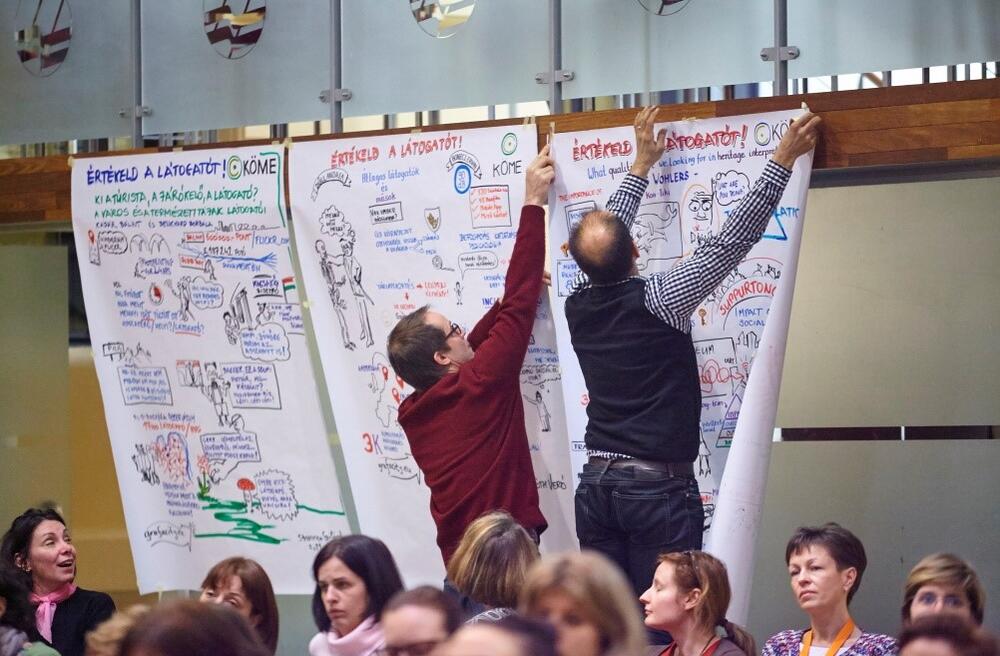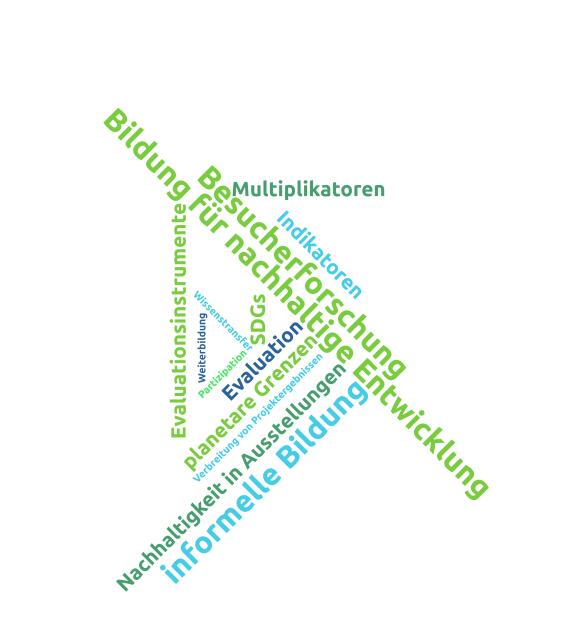Development and dissemination of evaluation strategies in informal educational institutions for professionalization of ESD programs in Hungary
International project funding
Subject and goals of the project
The object of the project was to implement a practical project to strengthen the development and dissemination of evaluation strategies in informal educational institutions in Hungary to support the dissemination of Education for Sustainable Development (ESD), Sustainable Development Goals (SDGs) and the concept of planetary boundaries. At the same time, relevant knowledge and practical experience should be provided to professionalize informal environmental education work, which is still largely unknown in Hungary. In addition to the development, implementation and testing of various evaluation instruments in three Hungarian institutions of informal environmental education, the project tested concrete approaches for the further development of the respective institutions, presented the results at a national conference and documented, published and disseminated case studies. Detailed analysis was also planned at the Skanzen Ethnographic Open Air Museum, the Hungarian Museum of Commerce and Tourism in Budapest, and a wildlife park on the western edge of Budapest.
There were the following sub-objectives of the project:
- Conceptual development of model examples in Hungary for
- innovative offers in the field of ESD/planetary boundaries/SDGs
- the development and integration of evaluation as a management tool through a two-day introductory training and one-day evaluation trainings in the three partner institutions
- one to two day implementation trainings in each of the three partner institutions, including the use of an innovative, digital observation tool
- the formulation of 3 institution-specific evaluation strategies
- Evaluation of four sustainability-oriented museum exhibitions in Lüneburg using the observation tool as part of a teaching assignment at Leuphana University
- Participative involvement of actors from the scene and multipliers through cooperation with an association active throughout Hungary, a Hungarian university and three selected partner institutions
- Public dissemination of the project results through a two-day conference on evaluation in Hungary at the Budapest Business School for about 180 participants as well as two workshops for application-oriented further training of the conference participants (workshop 1: standard instruments of visitor research; workshop 2: creative evaluation techniques), an online and print publication (guide with approx. 300 pages) as well as project-accompanying press work
Innovation and exemplary nature of the project
The project was able to make an important contribution to strengthening the dissemination of ESD, SDGs and the concept of planetary boundaries in Hungary and to providing relevant knowledge for professionalizing informal education work. The project was particularly innovative in three areas that still represent uncharted territory in Hungary:
- in disseminating knowledge on ESD, planetary boundaries and SDGs
- in the implementation of an application-oriented evaluation training to learn evaluation techniques and to develop indicators for the purpose of improving environmental and sustainability education offers
- in the development of new and innovative informal education offerings in three Hungarian partner institutions
Another innovation was that a prototype observation system (observation tool) developed by the Hungarian colleagues was tested and further developed to record all activities of visitors (see also www.visitorsperspective.eu/unser-angebot/beobachtungen).
By involving the Hungarian partner, a dissemination and long-term implementation of the project results in various educational programs in Hungary can be expected. For example, there are 55 large protected areas in Hungary, which also act as education providers in different ways (national parks: 10, biosphere reserves: 62, protected landscape areas: 393). The number of Hungarian zoos and wildlife parks is 414, and more than 50 percent of these facilities are managed by the public sector. The umbrella association of botanical gardens in Hungary currently includes 31 members or institutions. According to the Hungarian Central Statistical Office, in 2015 there were a total of 4 292 exhibitions in Hungary, visited by some 9.6 million guests in 700 museums. Of the many types of institutions mentioned above, at least nine of the fifteen most popular Hungarian museums can be thematically linked to the concept of education for sustainable development (for example, the Hungarian Natural History Museum, the Hungarian Open Air Museum Szentendre Skanzen, Millenáris Budapest).
Special aspects of the project
- Participative structure in the project implementation, especially with the cooperation partners and the three Hungarian partner institutions
- Local knowledge of the applicant and especially of the Hungarian cooperation partner
- Further training of representatives of the Hungarian cooperation partner and the three Hungarian partner institutions
Funding subject: Tools and competencies for sustainability analysis, increasing sustainability awareness and promoting action
Cooperation partners:
- KON-TIKI Office for Education and Experience Planning, Germany
- Association of Cultural Heritage Managers (KÖME), Hungary
Associated partners:
- Leuphana University of Lüneburg, Germany
- Budakeszi Wild Park, Hungary
- Szentendre Skanzen Village Museum, Hungary
- Hungarian Museum of Trade and Tourism, Hungary
- Budapest Business School, Faculty of Commerce, Hospitality and Tourism, Hungary
Locations: Germany (focus: Lüneburg in Lower Saxony), Hungary
Funding period: December 2017 to May 2019, Download final report
Project costs: Total volume: 189 705 Euro, DBU funding: 93 917 Euro
DBU-AZ: 33946
Note: Translation of the German version with DeepL
Last updated: 09.11.2021



